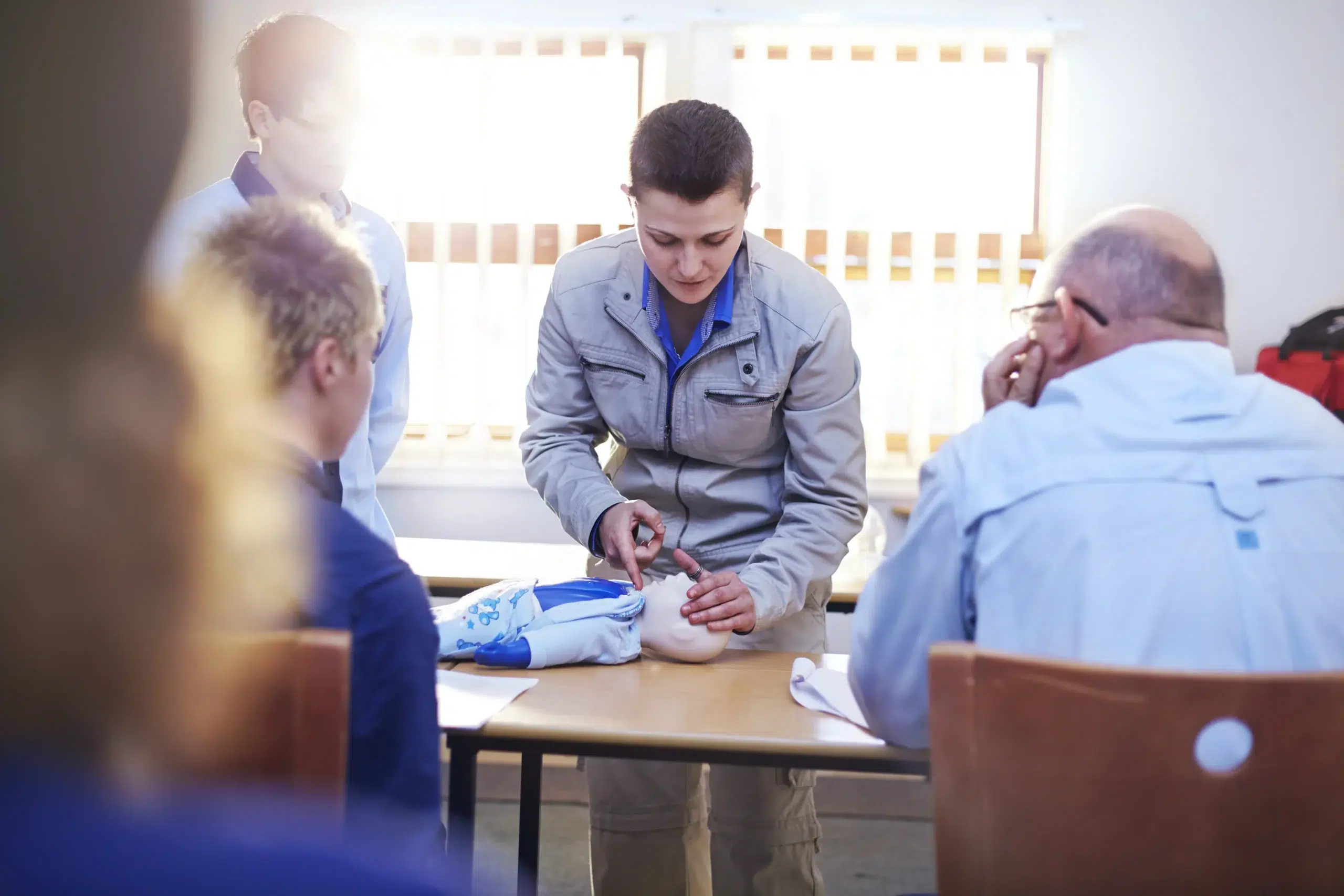Imagine being at work when a colleague suddenly collapses. What do you do? This is where CPR and first-aid training come into play. It’s crucial for every workplace to prioritize these skills to ensure a safe environment for everyone.
Understanding CPR and First-Aid in the Workplace
Cardiopulmonary resuscitation (CPR) and first-aid are lifesaving techniques that can make the difference between life and death. CPR involves chest compressions and rescue breaths to maintain blood flow and breathing. Meanwhile, first-aid covers the immediate care given before professional help arrives. Both are essential skills that can prevent minor injuries from escalating into major ones.
The Lifesaving Power of CPR
CPR is not just a skill; it’s a lifesaver. It can double or even triple a cardiac arrest victim’s chance of survival. According to the American Heart Association, about 90% of people who suffer out-of-hospital cardiac arrests die. However, immediate CPR can drastically improve survival rates[1].
First-Aid Training Enhances Safety
First-aid training equips employees with the knowledge to address various emergencies, from cuts and burns to more severe injuries. This preparedness minimizes panic and ensures swift response, reducing the severity of injuries and potentially saving lives.
Legal Implications of Workplace Training
Employers have a legal obligation to provide a safe working environment. OSHA (Occupational Safety and Health Administration) mandates that certain businesses must have trained first-aid providers on-site. Non-compliance can lead to legal repercussions and hefty fines.
Building Employee Confidence
Training boosts employee confidence. Knowing how to handle emergencies empowers staff, fostering a sense of responsibility and teamwork. Employees are more likely to stay calm and composed in crises, leading to better outcomes.
Reducing Workplace Accidents
Workplace accidents are unpredictable but not unavoidable. Having trained personnel reduces the likelihood of accidents escalating. Quick responses can prevent minor injuries from becoming severe, ensuring the well-being of all employees.
Addressing Common Workplace Injuries
Workplace injuries vary widely. Common issues include slips, trips, falls, and cuts. With the right training, employees can treat injuries immediately, minimizing downtime and promoting a swift return to productivity.
The ROI of Safety Training
Investing in CPR and first-aid training is not just about compliance; it’s a sound financial decision. Reduced accidents mean less time off work, fewer insurance claims, and a healthier workforce. In the long run, businesses save money while promoting employee well-being.
Creating a Culture of Safety
Safety should be ingrained in a company’s culture. Regular training reinforces this, encouraging employees to prioritize safety in their daily tasks. A strong safety culture leads to a more motivated and engaged workforce.
Customizing Training Programs
Every workplace is unique. Tailoring training programs to address specific risks ensures that employees are prepared for the most likely emergencies. Customization enhances the program’s relevance and effectiveness.
Leveraging Technology in Training
Technology has revolutionized workplace training. Interactive modules, virtual reality simulations, and online courses make learning accessible and engaging. These tools ensure that employees retain crucial information, ready to apply it when needed.
Encouraging Continuous Learning
CPR and first-aid skills need regular updates. Encouraging continuous learning keeps employees informed about the latest techniques and procedures, ensuring they’re always prepared to handle emergencies effectively.
Collaborating with Experts
Partnering with certified trainers and medical professionals ensures high-quality instruction. Experts bring real-world experience and knowledge, enriching the training process and providing valuable insights.
Evaluating Training Effectiveness
Regular assessment of training programs ensures they meet objectives. Feedback from employees can identify areas for improvement, ensuring the training remains relevant and effective.
Conclusion
Workplace CPR and first-aid training are invaluable. They save lives, reduce accidents, and foster a culture of safety. Businesses that invest in these programs not only comply with legal standards but also demonstrate a commitment to employee well-being. To explore more about implementing these programs, consider reaching out to us.






